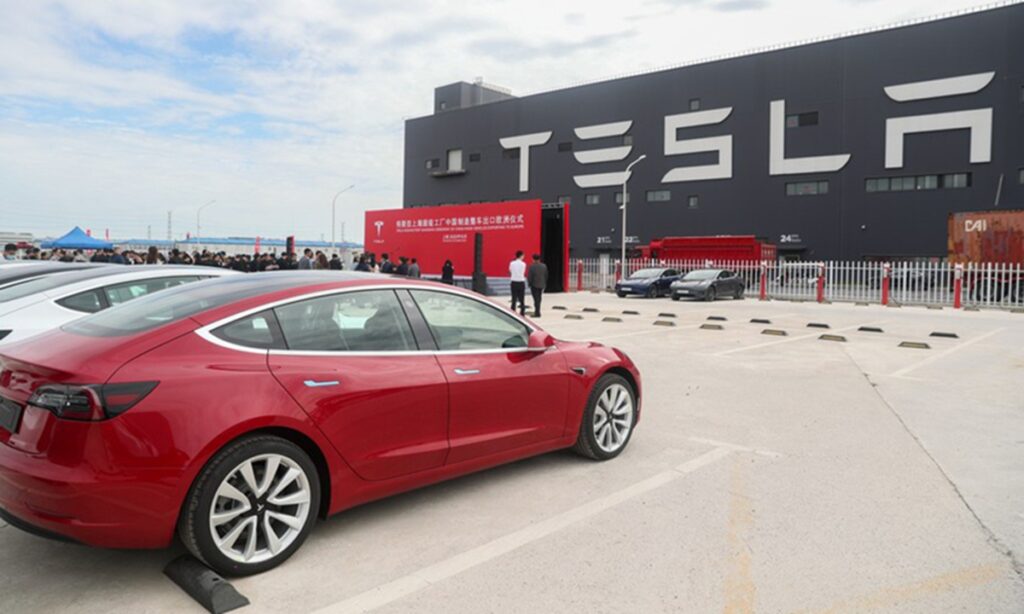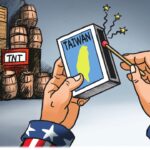While it has become common to see Western media outlets blame Chinese supply chain problems partially for the sluggish stock performance of Tesla and Apple, it may be time for the two US giants to face up to the challenges of a more competitive Chinese market.
Tesla on Monday reported record production and deliveries for 2022. The electric vehicle giant made 1.37 million cars in total last year, up 47 percent year-on-year, with deliveries up 40 percent to 1.31 million. But the numbers still missed Wall Street estimates, which is likely to lead to more pressure for Tesla’s stock. Tesla’s share price plunged 65 percent in 2022, losing nearly 37 percent in December alone and marking its worst year since going public in 2010.
Meanwhile, Apple’s share also experienced a rare fall over the past year, plummeting by about 27 percent to $130 per share. Analysts generally project Apple’s net profits to tumble more than 8 percent in the fourth quarter of 2022, which would break a 14-quarter revenue growth streak, according to media reports.
While there are different reasons behind the sluggish stock performance of Tesla and Apple, one thing they have in common is that they both have considerable production capacity in China. This has led some Western media outlets to attribute slowing business growth to local production disruption due to the epidemic outbreaks in China, which apparently misses the point.
Take Tesla’s Shanghai Gigafactory as an example. Production at the Shanghai plant was indeed affected by the COVID-19 outbreak during the first half of 2022. But that impact was short-lived and limited compared with the whole of year production. The annual output of Tesla’s Gigafactory in Shanghai is estimated to surpass 800,000 in 2022, ranking first among Tesla’s factories worldwide, according to media reports.
Indeed, for those concerned about Tesla’s performance in China, production may be the least of their worries. What’s happening in the Chinese market may be the real challenge that the electric vehicle giant needs to be prepared for.
For Tesla, delivering fewer cars than it makes has been rare, but such a trend in China has been increasingly obvious. Tesla is extending its 6,000-yuan subsidy that began in early December to the beginning of 2023. The automaker is offering buyers of the Model 3 sedan and Model Y sport utility vehicle up to 10,000 yuan off if they take delivery before February 28. The amount and time length of the subsidy is, to a certain extent, sufficient to indicate the sales pressure faced by the automaker.
According to data from the China Passenger Car Association, retail sales of new energy passenger vehicles in China were 5.03 million units in the first 11 months of 2022, up 100.1 percent year-on-year. Specifically, BYD’s 2022 deliveries rose to 1.86 million units, up 208.64 percent year-on-year. Most of BYD’s deliveries were made in China. By comparison, Tesla’s sales growth in China during the same period is around 50 percent according to industry estimates.
The sales pressure faced by Tesla highlights the rise in strength of Chinese new energy vehicle industry amid a changeable market. In the past, the ever-growing demand of Chinese consumers was a big reason why American companies like Tesla and Apple have been so successful in China. But as the scale and industrial chain advantages of Chinese manufacturing enabling Chinese companies to improve their competitiveness, competition in the Chinese market is becoming fiercer, which could be translated into shrunk leading advantages of foreign companies. In this sense, it will become more challenging for foreign companies to achieve the same success as before.
Of course, China remains an important market for either electric cars or consumer electronics. But a more competitive market means that multinational companies like Tesla and Apple will need to adapt to the environment to create more products that can lead the Chinese market.
China will continue to attract more foreign investment by opening up, but that doesn’t mean it will be as easy as it was in the past to capture the Chinese market. More competition will drive forward-looking foreign investors to achieve more development in the global markets by investing in China.
(Global Times)




